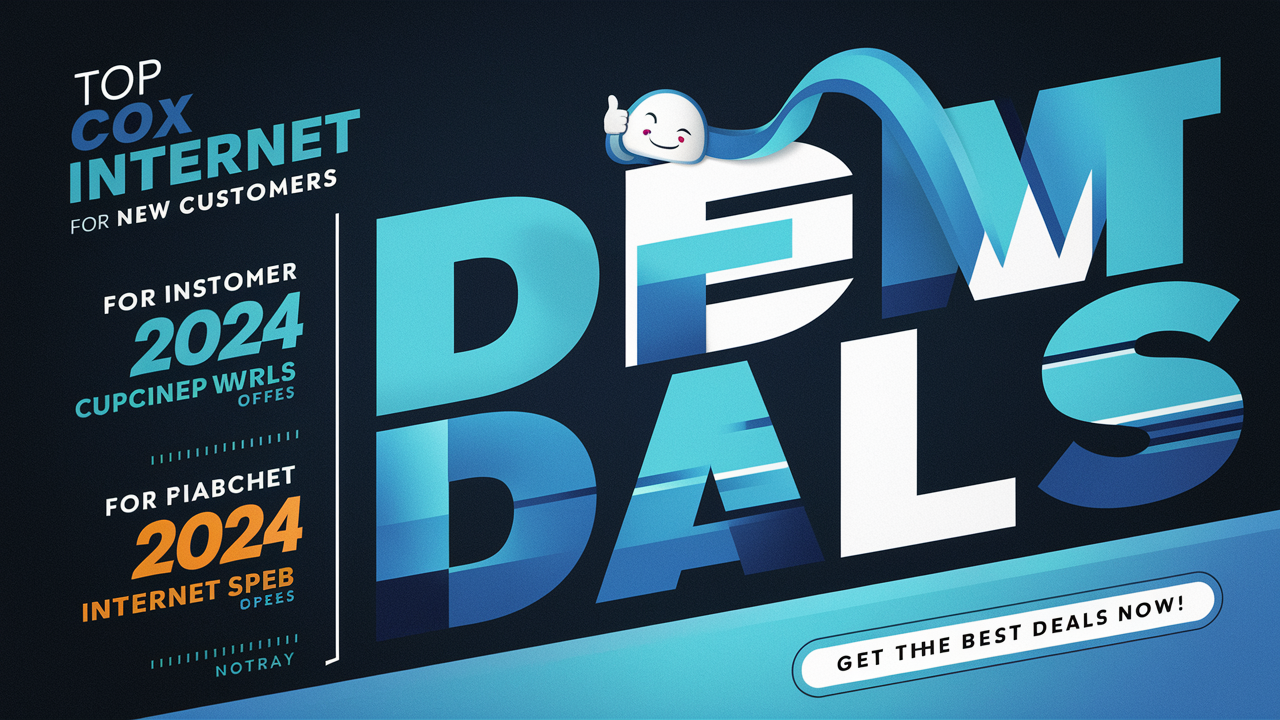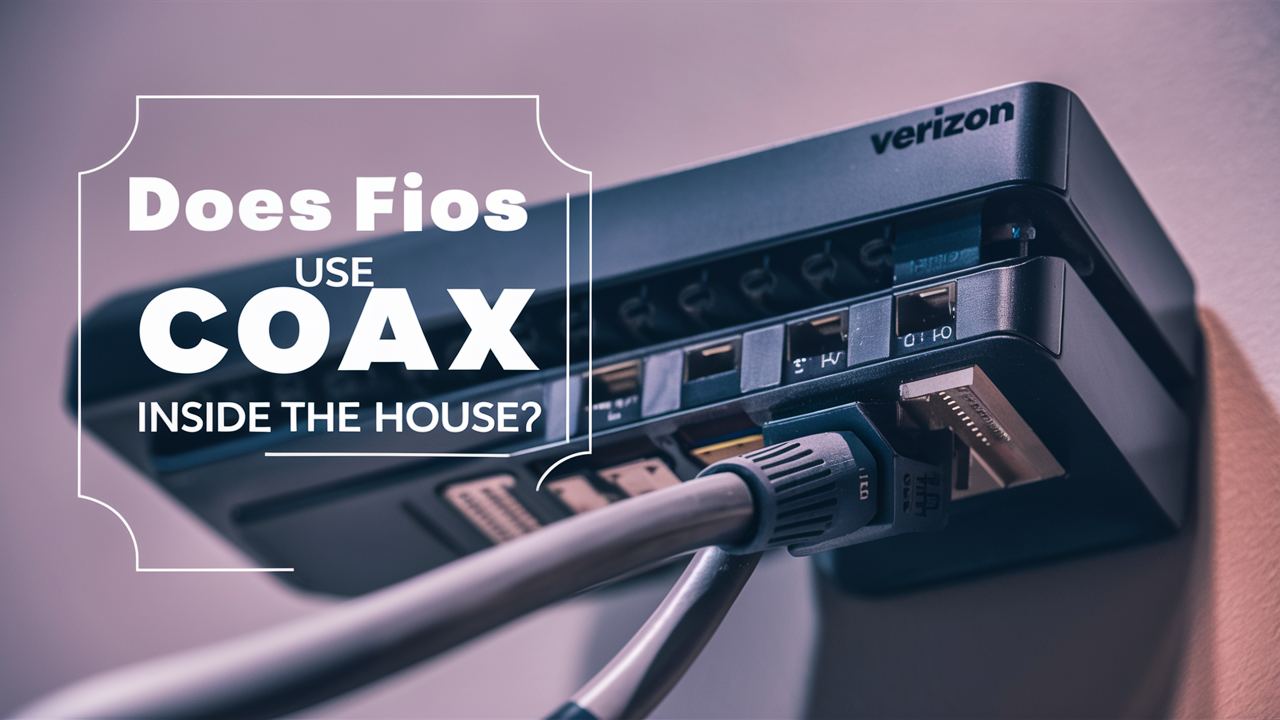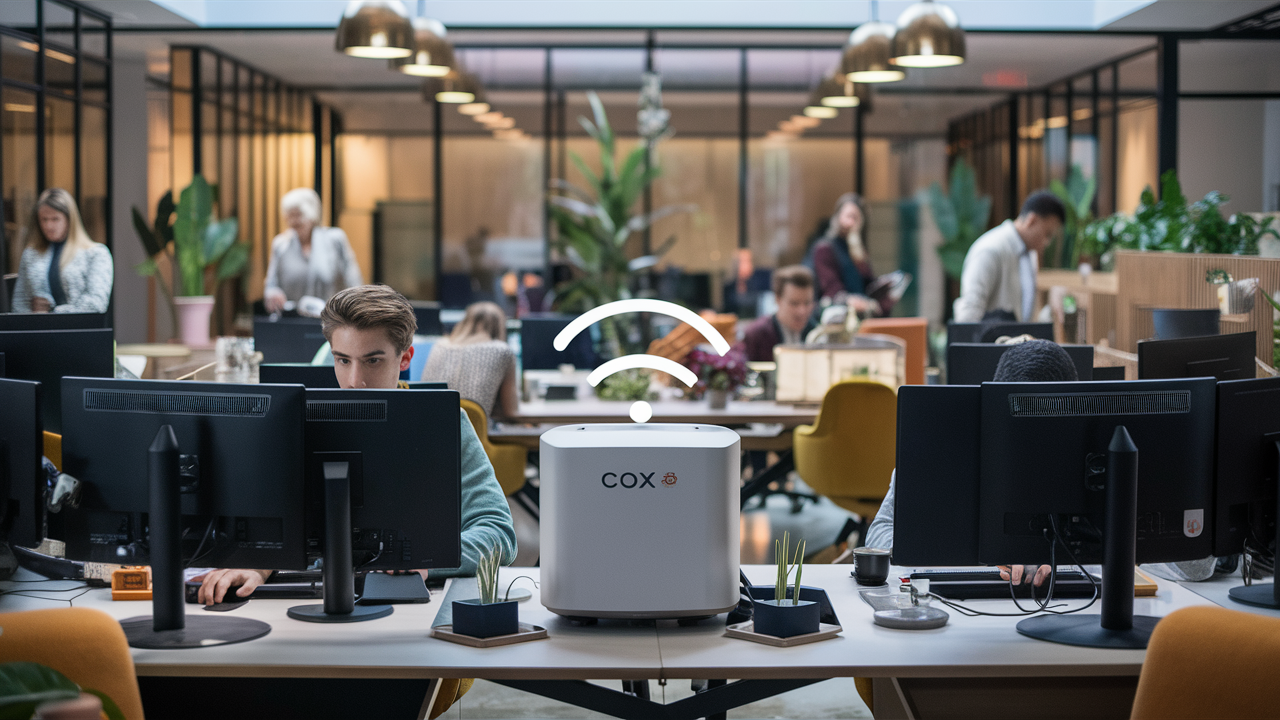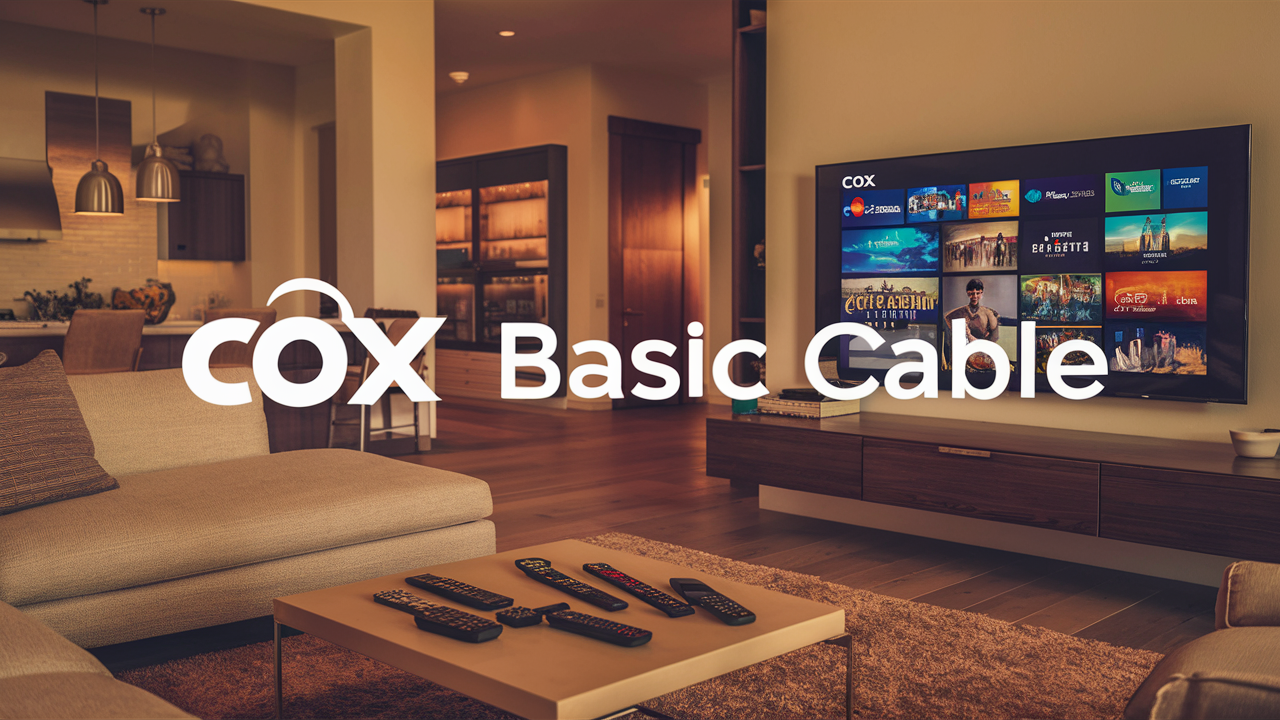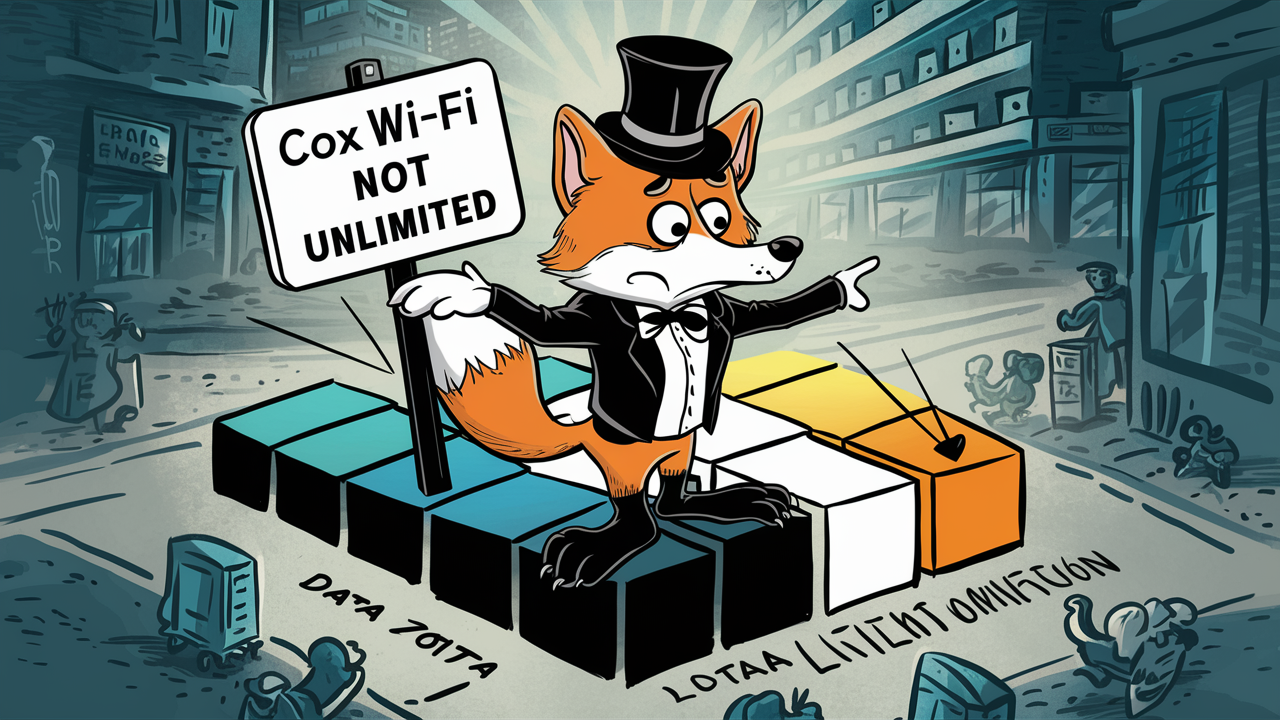Does Cox use Cable Internet?
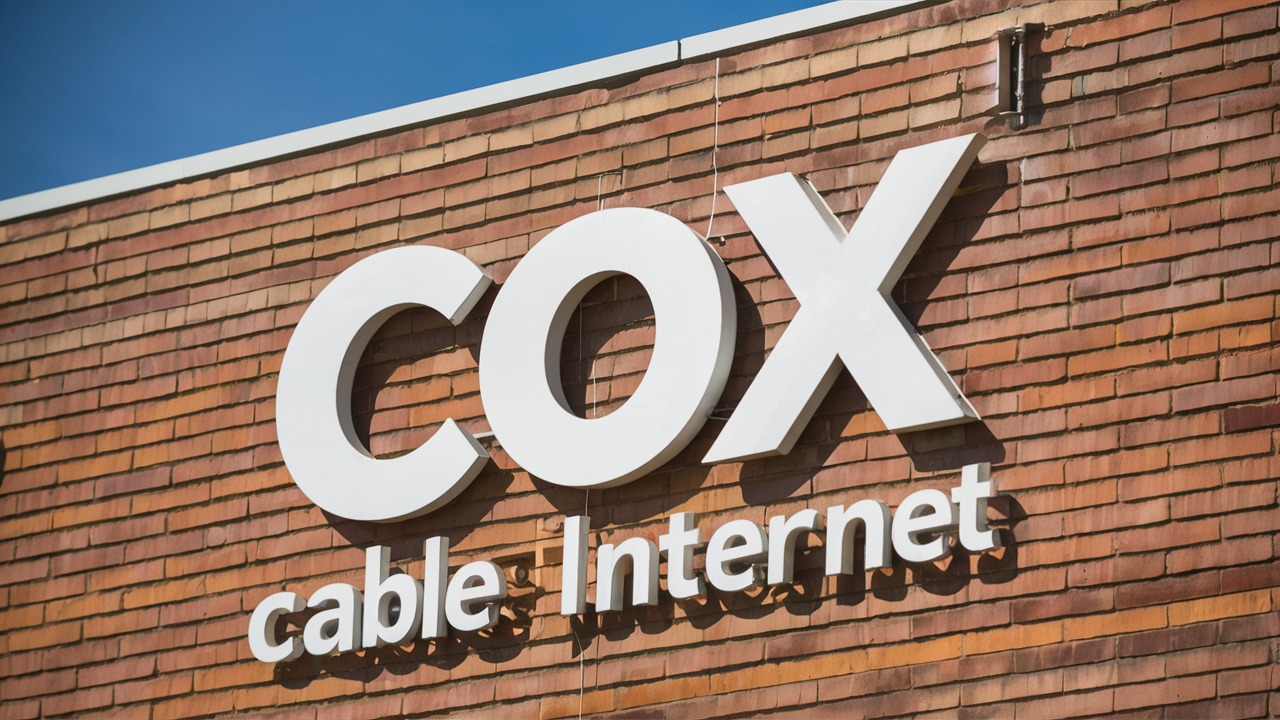
Yes, Cox Communications primarily uses a hybrid fiber-coaxial (HFC) network, commonly known as cable internet. This technology leverages existing coaxial cable infrastructure to deliver high-speed internet services. Cox's robust HFC network is a cornerstone of their connectivity solutions, offering competitive speeds and reliability for residential and business customers across their service areas in 2025.
[Section 1: Does Cox Use Cable Internet? An In-Depth Look at Cox's Network Technology]
In the ever-evolving landscape of internet connectivity, consumers often find themselves navigating a sea of acronyms and technical jargon. One of the most frequently asked questions, particularly for those residing in areas serviced by Cox Communications, is whether Cox utilizes cable internet. The straightforward answer is a resounding yes. Cox Communications is a major player in the broadband market, and its primary method of delivering high-speed internet to millions of households and businesses across the United States is through a sophisticated network that is fundamentally based on cable technology. This isn't just any cable technology, however; it's a highly advanced system that has undergone significant upgrades to meet the demands of modern digital life. As of 2025, Cox continues to rely heavily on its robust hybrid fiber-coaxial (HFC) infrastructure, a testament to its effectiveness and scalability. This article will delve deep into what this means for consumers, exploring the underlying technology, its advantages, potential limitations, and how it stacks up against other internet service options available today.
Understanding the technology behind your internet connection is crucial for making informed decisions about your service. It impacts everything from the speeds you can achieve to the reliability of your connection. Cox's commitment to its HFC network means that users can generally expect consistent performance, especially when compared to older cable technologies. The company has invested billions over the years to upgrade its network, ensuring that it remains competitive and capable of supporting the increasing bandwidth demands driven by streaming, online gaming, remote work, and the proliferation of smart home devices. By the close of 2024 and looking into 2025, Cox's HFC network is designed to deliver multi-gigabit speeds in many areas, a significant leap from the speeds offered just a decade ago. This continuous investment and technological advancement are key to understanding why Cox remains a dominant force in the cable internet sector.
[Section 2: Understanding Cox's Network: The Backbone of Their Service]
Cox's network is a complex and interconnected system designed to deliver a range of telecommunication services, including high-speed internet, digital television, and voice services. The foundation of this network is its extensive infrastructure, which primarily consists of a blend of fiber optic cables and coaxial cables. This hybrid approach is what defines their "cable internet" offering.
The Hybrid Fiber-Coaxial (HFC) Architecture
At its core, Cox's internet service relies on the Hybrid Fiber-Coaxial (HFC) network. This architecture represents a significant upgrade from older, purely coaxial cable systems. In an HFC network, fiber optic cables are used to carry data signals from Cox's central offices or headends to neighborhood nodes. From these nodes, coaxial cables then branch out to individual homes and businesses. This strategic use of fiber optics for the long-haul transmission allows for much higher bandwidth and lower signal degradation over distance, while the coaxial cables provide the final connection to the end-user. This combination offers a cost-effective way to deliver high-speed internet to a broad customer base, leveraging the existing coaxial infrastructure that was originally laid for cable television.
Network Infrastructure and Coverage
Cox operates in specific geographic regions, primarily in the United States. Their network coverage is not nationwide, but rather concentrated in states like Arizona, California, Florida, Georgia, Nevada, North Carolina, Ohio, Oklahoma, and Virginia. Within these service areas, Cox has invested heavily in maintaining and upgrading its physical infrastructure. This includes the physical cables, amplifiers, routers, and other networking equipment necessary to ensure reliable service delivery. The density and quality of this infrastructure directly impact the internet speeds and stability experienced by customers in a particular neighborhood or city. As of 2025, Cox is actively engaged in further expanding its fiber optic backbone and upgrading its HFC network to support higher-tier speed plans, including multi-gigabit options.
The Role of DOCSIS Technology
The performance of Cox's cable internet is also dictated by the Data Over Cable Service Interface Specification (DOCSIS) standard. DOCSIS is a set of technical standards that enables high-speed data communication over coaxial cable networks. Cox, like other cable internet providers, adheres to these standards. Newer versions of DOCSIS, such as DOCSIS 3.0 and the increasingly prevalent DOCSIS 3.1, are crucial for delivering the multi-gigabit speeds that consumers expect in 2025. DOCSIS 3.1, in particular, significantly increases the capacity of cable networks by utilizing a wider range of frequencies and employing more efficient modulation techniques. This allows Cox to offer symmetrical or near-symmetrical upload and download speeds on its higher-tier plans, a feature that was once exclusive to fiber optic connections. The ongoing deployment of DOCSIS 3.1 is a key factor in Cox's ability to compete with other broadband technologies.
[Section 3: The Technology Behind Cox's Internet: Hybrid Fiber-Coaxial (HFC) Explained]
To truly understand if Cox uses cable internet, it's essential to break down the Hybrid Fiber-Coaxial (HFC) technology. This isn't the same as the cable internet of the early 2000s; it's a sophisticated system that has evolved considerably. HFC represents a smart integration of two powerful transmission mediums: fiber optics and coaxial cable.
Fiber Optics: The High-Speed Backbone
The "fiber" in HFC refers to fiber optic cables. These cables transmit data using pulses of light through thin strands of glass or plastic. Fiber optics are the gold standard for high-speed data transmission due to their:
- Immense Bandwidth Capacity: Fiber can carry vastly more data than copper or coaxial cables.
- Low Latency: Light travels incredibly fast, resulting in minimal delay in data transmission.
- Resistance to Interference: Fiber optic signals are not affected by electromagnetic interference, ensuring a cleaner signal.
- Long-Distance Transmission: Signals can travel much further without significant degradation compared to copper-based technologies.
Cox utilizes fiber optic cables to bring the internet signal from their main data centers or regional hubs as close as possible to neighborhoods. This significantly reduces the distance the signal has to travel, thereby maintaining its integrity and speed.
Coaxial Cables: The Final Connection
The "coaxial" in HFC refers to the familiar coaxial cable that has been used for cable television for decades. These cables are copper-based and are highly effective at carrying radio frequency (RF) signals. In an HFC network, coaxial cables are used for the "last mile" connection, extending from a neighborhood fiber optic node directly to individual homes or businesses. While coaxial cable has limitations compared to fiber optics in terms of raw bandwidth and susceptibility to interference over very long distances, its widespread existing infrastructure makes it an economical choice for the final leg of the connection. Cox leverages advancements in DOCSIS technology to push increasingly higher speeds over these coaxial lines.
How HFC Works Together
The synergy between fiber and coaxial cable in an HFC network is what makes it so effective. Data originates from the internet backbone and travels via high-capacity fiber optic lines to a local node. At this node, the optical signal is converted into an electrical signal suitable for transmission over coaxial cable. This electrical signal then travels through the coaxial cable network to your modem. For uploads, the process is reversed: data from your modem travels via coaxial cable to the node, where it's converted back to an optical signal and sent upstream via fiber optics to the internet backbone. This hybrid approach allows Cox to offer high-speed internet services to a large number of customers efficiently, capitalizing on existing infrastructure while incorporating the superior performance of fiber optics for the majority of the data's journey.
[Section 4: Cox's Network Evolution: Adapting for 2025 and Beyond]
The internet landscape is in constant flux, with demand for faster speeds and more reliable connections growing exponentially year over year. Cox Communications has not been a passive observer in this evolution; instead, they have consistently invested in upgrading their HFC network to meet and anticipate these demands. This commitment to innovation is particularly evident as we look at their network capabilities in 2025.
The Rollout of DOCSIS 3.1 and Beyond
A significant driver of Cox's network evolution has been the widespread adoption of DOCSIS 3.1. This standard allows cable operators to utilize spectrum more efficiently, unlocking significantly higher download and upload speeds. Many of Cox's service areas now offer plans that leverage DOCSIS 3.1, enabling speeds of up to 1 Gbps or even higher. In some markets, Cox is already deploying DOCSIS 4.0 technologies, which promise even greater capacity, lower latency, and the potential for symmetrical multi-gigabit speeds. This continuous upgrade cycle ensures that Cox's cable internet remains a competitive offering, capable of supporting bandwidth-intensive applications like 8K streaming, virtual reality, and advanced cloud computing for businesses.
Increased Fiber Penetration
While HFC is their primary model, Cox is also increasing the amount of fiber optic cable deployed deeper into their network. This means that in many newer deployments or areas undergoing upgrades, the fiber optic nodes are placed closer to homes, further reducing the length of coaxial cable runs. This "fiber deeper" strategy further enhances speeds, reliability, and capacity. In some instances, Cox may even offer fiber-to-the-home (FTTH) services in select new developments or through specific network build-outs, although their core offering remains HFC.
Network Modernization and Capacity Expansion
Beyond specific technological standards, Cox is continuously modernizing its network infrastructure. This includes upgrading equipment at their headends and hubs, improving the quality of their coaxial plant, and implementing advanced network management systems. These efforts are aimed at increasing overall network capacity, reducing congestion during peak hours, and enhancing the stability and reliability of their services. For consumers in 2025, this translates to a more consistent and dependable internet experience, even as more devices connect and data consumption continues to rise. Statistics from industry reports in late 2024 indicate that Cox has been one of the leading cable providers in terms of network investment, focusing on these critical upgrades.
[Section 5: Comparing Cox's Cable Internet to Other Technologies in 2025]
As consumers evaluate their internet options in 2025, it's helpful to understand how Cox's cable internet (HFC) stacks up against other prevalent technologies. The primary competitors are fiber optic (FTTH), DSL, and fixed wireless/5G home internet.
| Feature | Cox Cable Internet (HFC) | Fiber Optic (FTTH) | DSL | Fixed Wireless/5G Home Internet |
|---|---|---|---|---|
| Speed (Download) | Up to 1 Gbps+ (depending on plan and location, leveraging DOCSIS 3.1/4.0) | Symmetrical speeds up to 10 Gbps+ (often faster and more consistent than HFC) | Typically 10-100 Mbps (limited by distance from exchange) | Variable, 50-300+ Mbps (depends on signal strength and network congestion) |
| Speed (Upload) | Varies, often lower than download (e.g., 10-100 Mbps), but improving with DOCSIS 3.1/4.0 | Symmetrical, matching download speeds (e.g., 1 Gbps+) | Significantly lower than download (e.g., 1-10 Mbps) | Variable, often lower than download, but can be competitive |
| Reliability | Generally good, but can be affected by network congestion and shared bandwidth within a neighborhood. | Excellent, direct fiber connection is less prone to interference and congestion. | Fair to Good, depends heavily on line quality and distance. | Variable, dependent on weather, signal strength, and tower proximity. |
| Latency | Moderate, generally suitable for most applications. | Very Low, ideal for gaming and real-time applications. | Moderate to High, can be problematic for real-time activities. | Moderate, can vary significantly. |
| Availability | Widespread in Cox service areas, often a primary option. | Growing, but still limited in many areas compared to cable. | Widely available, but often slower and less competitive. | Expanding rapidly, especially in suburban and rural areas where other options are limited. |
| Cost | Competitive, with various tiers offering different price points. | Can be more expensive, especially for higher symmetrical speeds. | Generally the cheapest, but offers the lowest performance. | Often competitive, with fixed pricing, but speeds can fluctuate. |
In summary, Cox's cable internet provides a strong balance of speed, reliability, and affordability for many users in 2025. It's a significant upgrade from DSL and often more readily available than fiber. While pure fiber offers superior performance in terms of symmetrical speeds and latency, Cox's HFC network, especially with DOCSIS 3.1 and 4.0, is highly competitive and sufficient for the vast majority of household needs. Fixed wireless and 5G home internet are excellent alternatives, particularly in underserved areas, but their performance can be more variable.
[Section 6: Benefits of Cox's Cable Internet for Consumers in 2025]
Cox's reliance on its robust HFC network offers several distinct advantages for consumers in 2025. These benefits are a primary reason why cable internet remains a dominant force in the broadband market.
- High Download Speeds: Cox offers a range of plans with substantial download speeds, often reaching gigabit tiers. This is crucial for activities like streaming high-definition and 4K content, downloading large files, and supporting multiple devices simultaneously without significant slowdowns. The widespread implementation of DOCSIS 3.1 ensures these speeds are achievable for many customers.
- Widespread Availability: Within its defined service territories, Cox's HFC network is extensive. This means that in many urban and suburban areas where Cox operates, cable internet is readily available, often providing a faster and more reliable option than DSL or satellite.
- Competitive Pricing: Cox generally offers competitive pricing structures for its internet plans. While top-tier speeds can be costly, there are often more affordable options that still provide good performance for everyday internet use. Bundling with TV and phone services can also lead to cost savings.
- Improved Upload Speeds (with DOCSIS 3.1/4.0): While traditionally known for asymmetric speeds (download much faster than upload), the advancements in DOCSIS 3.1 and the emerging DOCSIS 4.0 are significantly improving upload capabilities. This makes Cox's cable internet more suitable for video conferencing, online gaming, and uploading large content, bringing it closer to the performance of fiber.
- Reliability: Compared to older cable technologies and some forms of fixed wireless, Cox's modern HFC network generally offers good reliability. The fiber optic backbone minimizes signal degradation over long distances, and ongoing network maintenance ensures consistent service for most users.
- Bundling Options: Cox offers a comprehensive suite of services, including internet, TV, and home phone. This allows customers to consolidate their bills and potentially save money by bundling multiple services, simplifying their home entertainment and communication needs.
[Section 7: Potential Drawbacks and Considerations for Cox's Cable Internet]
Despite the many benefits, it's important for consumers to be aware of potential drawbacks associated with Cox's cable internet service in 2025.
- Shared Bandwidth: Cable internet operates on a shared network. This means that all users in a specific neighborhood draw from the same pool of bandwidth. During peak usage times (e.g., evenings and weekends), this can lead to slower speeds and increased latency for individual users as the network becomes more congested. While DOCSIS 3.1 and 4.0 have significantly increased capacity, this remains a potential issue in densely populated areas.
- Asymmetrical Speeds: While improving, upload speeds on Cox's cable internet are still typically lower than download speeds. For users who frequently upload large files, stream live video to platforms like Twitch or YouTube, or engage in heavy cloud backups, this asymmetry can be a limiting factor compared to symmetrical fiber optic connections.
- Availability Limitations: Cox is not available nationwide. Its service is limited to specific regions of the United States. If you live outside these areas, Cox's cable internet is not an option.
- Data Caps: Depending on the specific plan and region, Cox may impose data caps on its internet services. Exceeding these caps can result in throttled speeds or additional charges. While some plans offer unlimited data, it's crucial to check the terms of service for your specific plan. As of 2025, many providers are moving towards unlimited data for higher-tier plans, but it's still a consideration.
- Equipment Rental Fees: Cox typically charges a monthly fee for modem and router rentals. While purchasing your own compatible equipment can save money in the long run, it requires an upfront investment and ensuring compatibility with Cox's network standards.
- Customer Service Variability: Like many large service providers, customer service experiences with Cox can vary. Some customers report excellent support, while others encounter challenges with response times or issue resolution.
[Section 8: How to Maximize Your Cox Cable Internet Experience]
To get the most out of your Cox cable internet service in 2025, consider these best practices:
- Choose the Right Plan: Assess your household's internet usage. If you stream a lot of 4K content, have multiple users, or work from home with frequent video calls, opt for a higher-tier plan. For basic browsing and email, a lower-tier plan might suffice and save money.
- Optimize Your Wi-Fi: The speed of your internet is only as good as your Wi-Fi signal. Ensure your router is placed in a central location, away from obstructions and other electronic devices that can cause interference. Consider upgrading to a Wi-Fi 6 or Wi-Fi 6E router for better performance and capacity, especially if Cox provides a compatible modem or you use your own.
- Use Wired Connections When Possible: For devices that require the most stable and fastest connection (e.g., gaming consoles, desktop computers for work), use an Ethernet cable directly connected to your router. This bypasses potential Wi-Fi interference and ensures you're getting the maximum speed your plan allows.
- Monitor Your Data Usage: If your plan has data caps, use Cox's tools or third-party applications to monitor your usage. This will help you avoid unexpected overage charges or speed throttling.
- Regularly Reboot Your Modem and Router: A simple reboot can often resolve minor connectivity issues and improve performance. Make it a habit to reboot your equipment periodically.
- Consider Purchasing Your Own Modem/Router: While there's an upfront cost, buying your own compatible modem and router can save you money on monthly rental fees over time. Ensure the equipment meets Cox's latest DOCSIS standards (e.g., DOCSIS 3.1) for optimal performance.
- Understand Your Contract Terms: Be aware of contract lengths, potential price increases after promotional periods, and data cap policies.
[Section 9: The Future of Cox's Network: What to Expect in the Coming Years]
Cox Communications is not resting on its laurels. The company is actively investing in the future of its network infrastructure. As we look beyond 2025, several key trends are likely to shape the evolution of their cable internet services.
Wider Deployment of DOCSIS 4.0
DOCSIS 4.0 represents the next significant leap in cable internet technology. It promises to deliver multi-gigabit speeds symmetrically (identical download and upload speeds), significantly lower latency, and increased capacity. Cox is expected to continue its rollout of DOCSIS 4.0 technologies, bringing speeds of 10 Gbps and beyond to more customers. This will further enhance their competitive position against fiber providers and cater to the increasing demands of bandwidth-intensive applications.
Further Fiber Deepening and Expansion
The trend of pushing fiber optic connections closer to the end-user will likely continue. This "fiber deepening" strategy not only enhances existing HFC capabilities but also lays the groundwork for future transitions to full fiber-to-the-home (FTTH) services where economically feasible. Expect Cox to strategically expand its fiber footprint, especially in new developments and areas where network upgrades are prioritized.
Increased Network Automation and AI
To manage increasingly complex networks and ensure optimal performance, Cox will likely leverage more advanced network management tools, including artificial intelligence (AI) and automation. These technologies can help predict and prevent network issues, optimize traffic flow, and improve the efficiency of maintenance and deployment, ultimately leading to a more stable and reliable service for customers.
Focus on 5G Integration and Fixed Wireless Alternatives
While Cox's core remains HFC, the company, like many others, is exploring how to integrate with or complement emerging technologies like 5G. This could involve offering fixed wireless access (FWA) as an alternative or supplementary service in areas where traditional cable deployment is challenging or less cost-effective. This diversification ensures they can serve a broader range of customer needs and locations.
Conclusion
In conclusion, the answer to "Does Cox use cable internet?" is a definitive yes. Cox Communications primarily utilizes a robust and continuously evolving Hybrid Fiber-Coaxial (HFC) network to deliver its high-speed internet services. This technology, a sophisticated blend of fiber optic cables for the long-haul transmission and coaxial cables for the final connection to homes and businesses, has been the backbone of Cox's offerings for years and remains a cornerstone of their strategy in 2025. The ongoing advancements in DOCSIS standards, particularly DOCSIS 3.1 and the upcoming DOCSIS 4.0,

